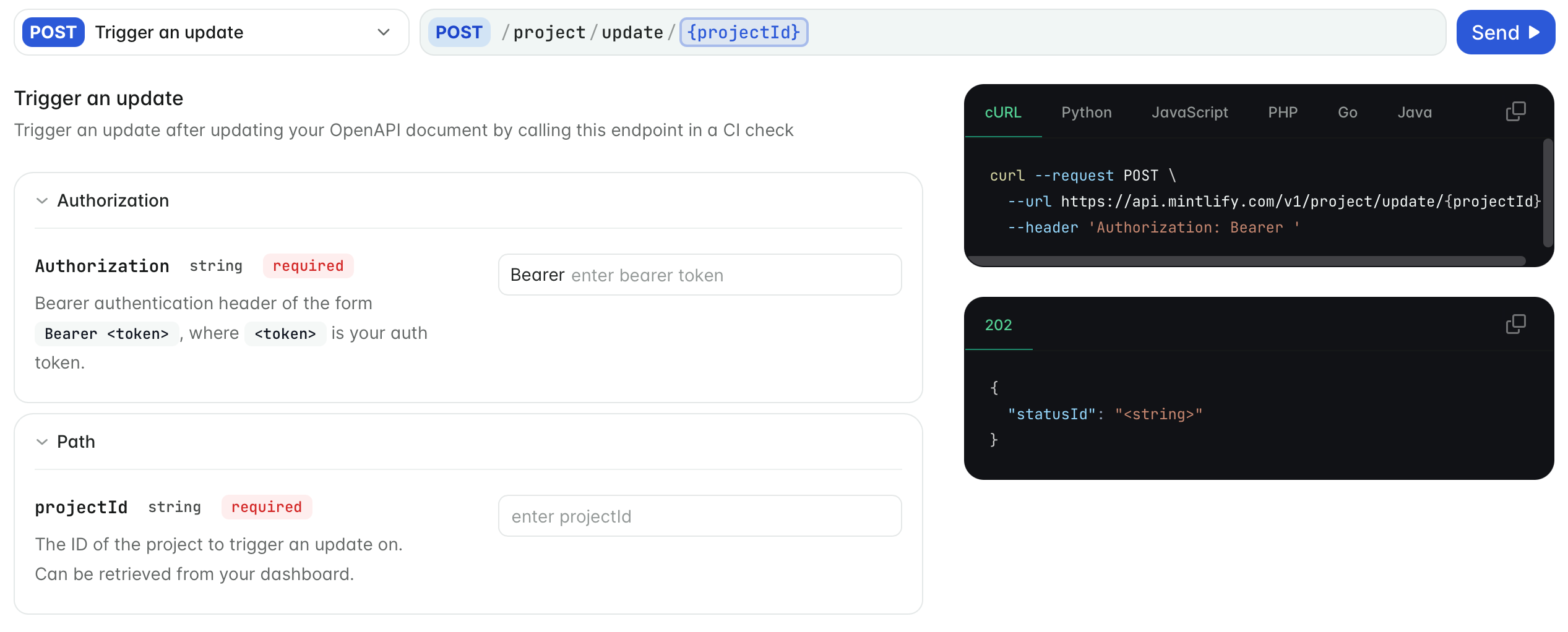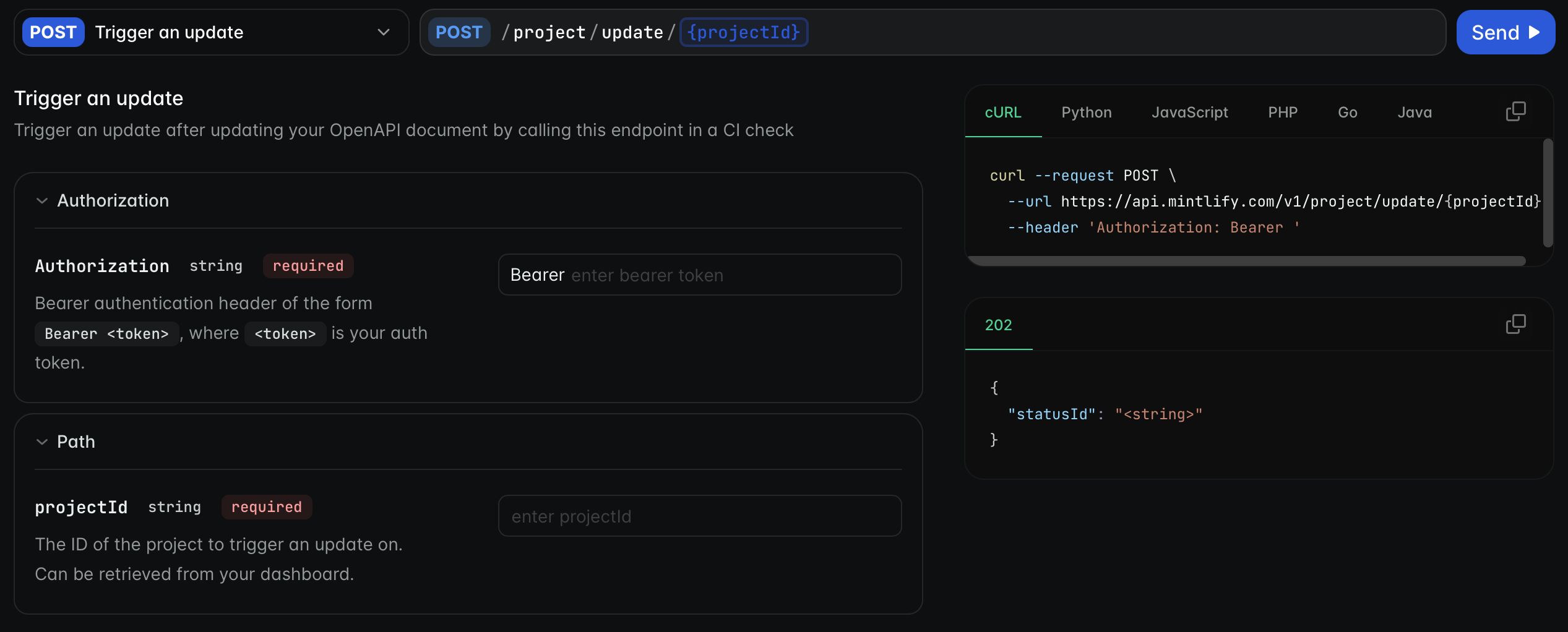API pages
Playground
Enable users to interact with your API
Overview
The API playground is an interactive environment that lets users test and explore your API endpoints. Developers can craft API requests, submit them, and view responses without leaving your documentation.

docs.json.
We recommend generating your API playground from an OpenAPI specification. See OpenAPI Setup for more information on creating your OpenAPI document.
Getting started
1
Add your OpenAPI specification file.
Make sure that your OpenAPI specification file is valid using the Swagger Editor or Mint CLI.
2
Configure `docs.json`.
Update your
docs.json to reference your OpenAPI specification. Add an openapi property to any navigation element to auto-populate your docs with pages for each endpoint specified in your OpenAPI document.This example generates a page for each endpoint specified in openapi.json and organize them under the “API reference” group in your navigation.Customizing your playground
You can customize your API playground by defining the following properties in yourdocs.json.
Configurations for the API playground.
Configurations for the autogenerated API examples.
Example configuration
Custom endpoint pages
When you need more control over your API documentation, use thex-mint extension in your OpenAPI specification or create individual MDX pages for your endpoints.
Both options allow you to:
- Customize page metadata
- Add additional content like examples
- Control playground behavior per page
x-mint extension is recommended so that all of your API documentation is automatically generated from your OpenAPI specification and maintained in one file.
Individual MDX pages are recommended for small APIs or when you want to experiment with changes on a per-page basis.
For more information, see x-mint extension and MDX Setup.
Further reading
- AsyncAPI Setup for more information on creating your AsyncAPI schema to generate WebSocket reference pages.

